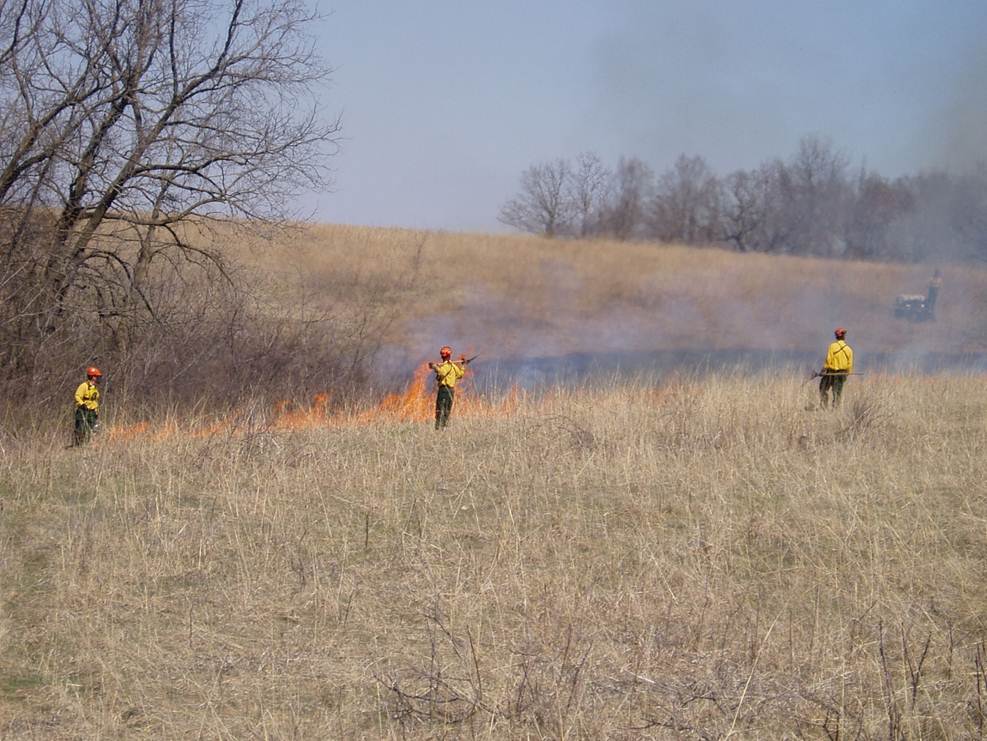Posted 03/31/14
A key challenge for land managers throughout southern Wisconsin is restoring prairies and oak savannas. The most effective way to do so is with prescribed fire. However, many more lands are in need of burning than there are resources available to burn them. SILVIS lab members Sarah Carter, Dave Helmers, and Volker Radeloff are working with Tracy Hmielowski, Paul Zedler and the Tallgrass Prairie and Oak Savanna Fire Science Consortium to identify priorities - those areas where prescribed fire can achieve the greatest ecological gains most effectively and efficiently.
Imagine an expansive prairie, dotted with Bur Oak trees, leaves swaying in the afternoon breeze. Bison were common in this scene, along with other vestiges of a time’s past. When Euro-Americans first settled southern Wisconsin, over 150 years ago, this is more or less what they found. However, with settlement came changes in land use, resulting in changes in land cover. The prairies and oak savannas with their rich and deep soils were converted to agriculture, urban areas sprouted, and natural disturbances, most notably fire, which were necessary to maintain the structure of the vegetation communities, were suppressed. As a result, the expansive prairies and oak savannas of Southern Wisconsin were nearly wiped from the map.

Fast-forward 150 years, and resources managers throughout Wisconsin are challenged to restore these once common habitats. The most effective approach is prescribed fire. Prescribed fires re-create natural burns in a safe and controlled manner. Fire is critical for knocking back woody vegetation, replenishing the soil, allowing certain plants to sprout or reproduce, and shaping the structure and composition of the habitats, which directly impact wildlife communities. Because prairie and oak savanna used to be expansive, covering most of southern Wisconsin, there are many lands today that need fire to maintain the character of the native habitats. Yet, this poses a different challenge. Resource managers have finite funds and personnel for applying prescribed fire. With so many lands that would benefit from fire, and limited resources to conduct prescribed fires, there is a real need to better understand where priorities lie. To achieve this, Sarah and Dave, along with collaborators from the Tallgrass Prairie and Oak Savanna Fire Science Consortium, are using an approach that considers the potential ecological gains of applying prescribed fire along with the effort needed to burn a given area and the ease with which managers are likely to be able to apply prescribed fire in a particular landscape.

The group is piloting this approach in Wisconsin, but is hoping that it may be more broadly applied across the region, and possibly in other regions, in the future. ‘Prescribed fire is a critical management tool for many landscapes in the US. Given limited resources, it is important to be able to use this tool strategically to achieve the greatest possible gains for our conservation dollars,’ says Sarah. To that end, the group is relying heavily on free, publically available datasets (e.g., Landfire vegetation data, Wildlife Action Plans, and Wildland-Urban Interface housing data), and common sense approaches to prioritization. ‘It is really important to us that others to be able to understand and apply this approach in their own landscapes. Many land management agencies and conservation organizations are working very hard to conserve, manage, and restore our native landscapes. The work is time consuming, complex and often expensive. We want to provide these managers with practical tools that can help them decide where they can get the greatest benefits from their efforts.'”
Story by Eric Wood
